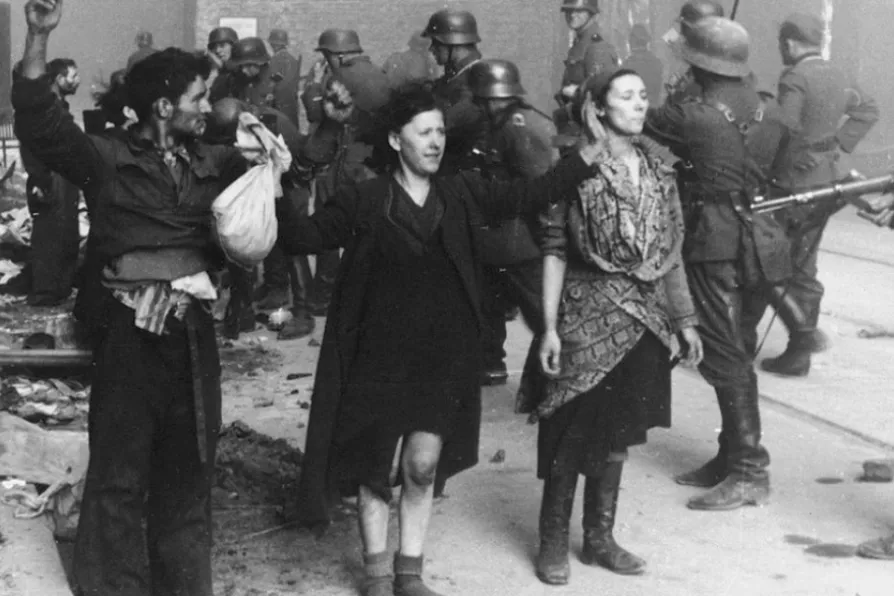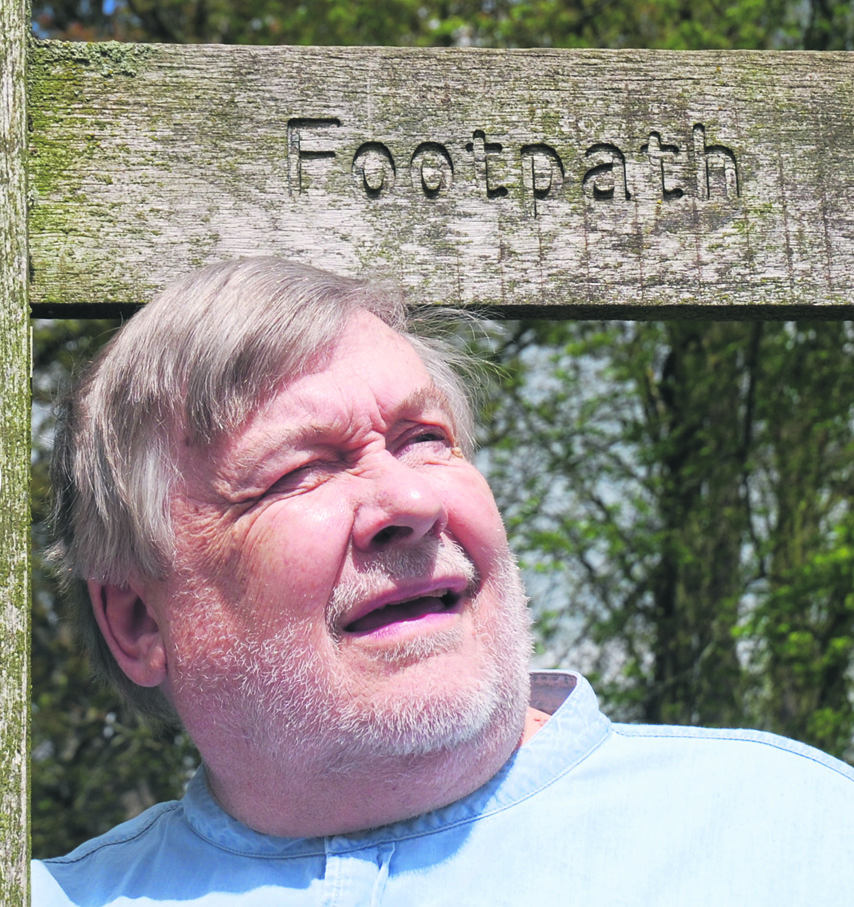Durham Miners’ Association general secretary ALAN MARDGHUM speaks to Ben Chacko ahead of Gala Day 2025

 Rounding up of civilians during the uprising
Rounding up of civilians during the uprising
The current well-orchestrated campaign to try to make the word zionist synonymous with the word Jewish has made me look back over a political lifetime where real anti-semitism, as opposed to politically motivated and devious accusations of it, has shaped the life and political thinking of me and those close to me.
I started writing this article with the idea of marking the 75th anniversary of the brave rising against the obscenity of the Warsaw Ghetto where, between April 19 and May 16 1943, one of the most heroic acts of Jewish resistance ever was played out in nazi-occupied Poland.
I will relate the story of the ghetto, but before we come to that let me tell another story nearer home, and itself set nearly 50 years ago and only a score of years after the heroism of the ghetto uprising.
This story starts when blackshirt Oswald Mosley stood in Kensington North in the 1959 general election. Mosley suffered a humiliating defeat but still battled on over the next two years trying to bring the various wings and splinter groups of post-war British fascism together.
This curious coupling would see the birth of the British National Party, but Mosley wasn’t to be any part of it. He was just one of far too many big-headed bigots who thought they deserved the top job as British fuehrer.
Mosley also organised meetings and conferences all over Europe for the rump of those far-right fascist groups that had escaped post-war justice.
Finally, with them, he formed The Party of Europe and, like most things he put his mind to, it was a grand failure.
Long-time fascist, self confessed Jew-baiter, street fighter and Mosley admirer Jeffrey Hamm was living in Holland Park in the late 1950s and was delighted when the race riots broke out in nearby Notting Hill.
Hamm had helped open the Union Movement’s fascist bookshop and meeting place in Kensington Park Road in 1959 and organised Mosley meetings in nearby Kilburn High Road and in North Kensington.
As often as possible he would try to get the man he thought of as “The Great Leader” to speak at these street corner meetings.
Whether Mosley was speaking or not, the meetings would always be disrupted by local anti-fascists not least from the Communist Party, Young Communist League (YCL) and from many London Jewish groups.
One of those young communists was a 16-year-old apprentice hairdresser from Paddington. She remembers that her YCL branch would race to beat the fascists to the best street corner spots for their soap box meetings.
She had come across the YCL in Kilburn High Road at one of those very meetings. She bought their magazine Challenge, liked what she read, and sent off the membership form.
Just a year into membership it was suggested she should climb up on the soap box as a speaker. “I was terrified at the thought of public speaking,” she recollects.
“Then I remembered our last YCL meeting. The subject had been the Warsaw Ghetto.The heroic actions of those women and men so inspired me that I climbed up and made my first political speech in public. They haven’t been able to shut me up since.”
So what, I hear you ask, happened to that young communist woman who, so inspired by the Jewish heroes of the ghetto, was to spend a life opposing not just anti-semitism but all kinds of prejudice, injustice and racism?
To only slightly gender-realign Charlotte Bronte’s climax to Jane Eyre: “Reader, I married her.”
The heroes of the ghetto
Late in 1939 Hitler gave one of his favourite officers, Reinhard Heydrich, an important job — all Jews in Poland were to be confined to ghettos surrounded by barbed wire, brick walls and armed guards.
Heydrich wasn’t slow to get to work. Jews had their property confiscated and they were herded into these new ghettos. The two largest were in Warsaw and Lodz.
By October 1939, Jews from Austria and Czechoslovakia were being shipped into these ghettos. Huge numbers died on the journey and Adolf Eichmann told those who survived that they would need to build their own shelters.
In Warsaw nazi troops sealed all entrances to the ghetto. Conditions were so bad that in just two years an estimated 100,000 Jews died of starvation and disease.
In January 1942, in a Berlin suburb beside lake Wannsee top nazis met to start to plan what became cynically known as the “final solution.” The pretty location could not have been further at odds from the ugly aim of the conference. Hitler’s Holocaust had started.
In the late summer of 1942, 310,322 Jews were deported from the Warsaw Ghetto and sent to the newly established extermination camps.
Rumours of what was happening in these camps filtered back to the ghetto. The Jews of Warsaw knew they must make a stand to resist any further deportation.
In January 1943, Heinrich Himmler gave instructions for Warsaw to be made Jew-free to celebrate Hitler’s birthday on April 20.
In the Warsaw Ghetto, resistance strengthened and groups sprang up — the Polish Home Army (AK), the Jewish Military Union (ZZW) and the communist Jewish Combat Organisation (ZOB).
On April 19 1943 nazi troops moved into the ghetto. The women and men of the ghetto had just two machine-guns, 15 rifles and 500 pistols, but they fought back with home-made grenades and petrol bombs.
Nazi military commander Brigadier-General Jurgen Stroop had never seen such resistance. He ordered his men to retreat and then gave cowardly instructions for the ghetto to be burnt to the ground.
The few Jews who escaped the flames were rounded up and deported to the extermination camp at Treblinka.
The heroic fighters of the ghetto continued the battle from the cellars and attics of Warsaw. Getting desperate, on May 8, the nazis pumped poison gas into the last fortified bunker. About a hundred women and men escaped into the underground sewers but most were killed by the gas.
Just over a year later, on August 1 1944, the Warsaw Uprising began and lasted for two months and Himmler had boastfully demanded that every inhabitant should be killed and that Warsaw should be razed to the ground as an example to the rest of nazi-occupied Europe.
Nearly three-quarters of Warsaw was left as smoking rubble.
Finally the Red Army fought their way into Warsaw against heavy nazi resistance. It took five days of heavy fighting for the Soviet forces to capture the right bank of the city but the tide of war had turned.
Hitler’s plan for a thousand-year Reich in the East lay smashed in dust and ashes.
Fewer than one hundred Jewish women and men survived the 1943 ghetto rising. But the courage and inspiration that they and their other brave comrades left behind will live for evermore and still inspires us 75 years on.



















